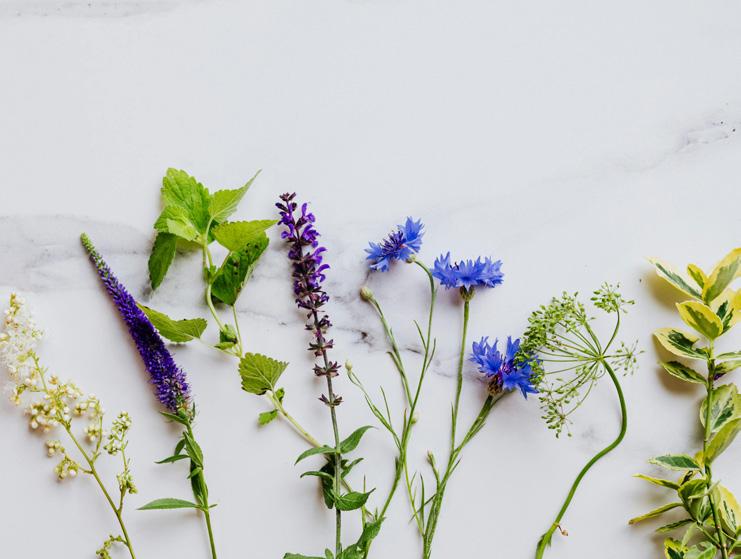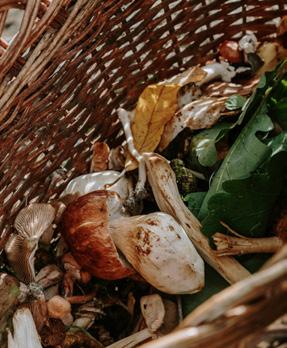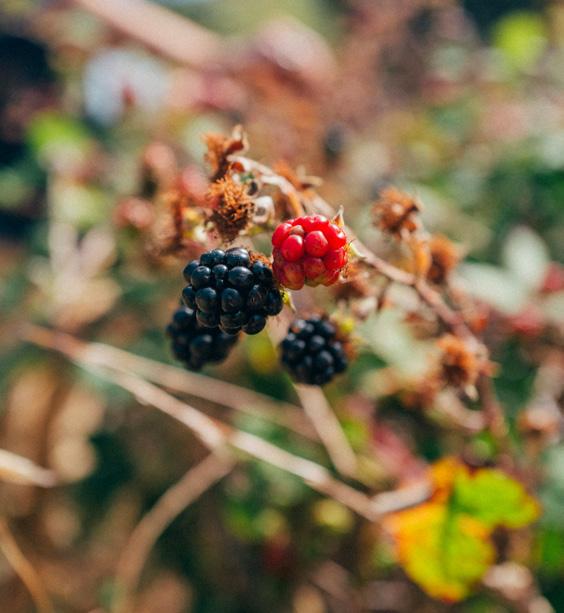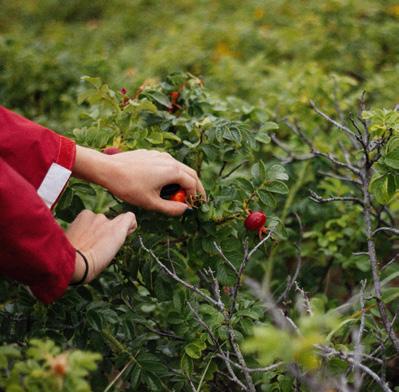
3 minute read
The Four F’s of Foraging
by Jessica Lovell
Foraging for wild edibles is a pastime I love. Every time I accidentally find a haul of oyster mushrooms or stumble across a maitake it is the best feeling you can have in the woods with your trousers on. I liken it to the most incredible treasure hunt you will ever go on, and generally, you get a free feast for your efforts.
Advertisement
Foraging can also be disastrous and it is very easy to make yourself very ill, it is also very easy to make yourself very dead. So do your research and crossreference in at least 2 books to avoid editorial mistakes. If you’re smart and diligent you will be fine, I promise.
So what are the four F’s of foraging?
The four F’s are the four things we can collect and remove without needing the landowner’s permission.
These are:
• Fruits
• Fungi
• Flowers
• Foliage
We cannot dig up and remove any roots or plants without the permission of the landowner. You may also need to research locally as many places have banned foraging. This is mainly in and around London due to unsustainable amounts being picked for the restaurant industry. This is NOT a foraging guide and I will not be liable if you go and shove a destroying angel in your gob!
Fruits
Brambles ramble and raspberries climb. These are generally the easy ones to find and ID. We have a good variety in the UK including brambles, raspberries, wild strawberries, hawthorns, sloes and elders to name a few. Beware though, some contain poisonous pips and have lookalikes, so do your research. You won’t go too far wrong with a bramble though, and I highly recommend you hunting down the odd bilberry or two.


Fungi
You know that music from Jaws? Well that’s the theme tune to some of these beauties. Get it wrong and you will die, it really is that simple. Some will kill you with as much as a square millimetre. Others, however, taste amazing.
Research research research!
I forage loads of mushrooms including chanterelles, oysters, maitake, porcini, hedgehog fungi, ink caps and deceivers to name a few. They all have distinguishing features and ways to tell very clearly what they are. It is not rocket science and I’m not dead yet so it can’t be that hard, however, I ALWAYS check.
I did find the most poisonous one in the UK in our woods last season though. Fascinating thing, and again it has its tells to let us know what it is. Just don’t lick it!

Foliage
There are some amazing leaves out there but I will stick with the forgotten gems, and my favourite ones.
Beech leaves – When young, are fantastic. Almost like apple skin and a taste of the changing season.
Young hogweed – Great in a stir-fry.
Wild garlic – The most essential one here!
Sorrel – Well worth picking and adding into your



Flowers
Nothing looks better than a salad with a few edible flowers in it. They taste marvellous and smell great. Some of my top ones include Ramsons when very young and still in the bud. Primrose flowers are one of the first to come through in spring and are lovely. Gorse can be a tasty nibble, but my absolute favourite is elder flowers. Dip them in batter, fry them up and dip them in sugar. Elderflower doughnuts, now that’s not just surviving, that’s thriving!
salad. They burst with citrus and freshness.
Wild mustard – I used to drive up in the Rover, open my ham sarnie and pick it out of the window!


In terms of survival and long term food we need starchy carbohydrates. This is actually a bit tricky to find. However, burdock wins the day for me in this regard. Make an expedient digging stick and go to town. Just remember the root of big plants can go down a LONG way so prepare for a bit of a battle. Treat it like a parsnip or spud and boil or roast it. Well worth the effort.





So there you go. I hope you are now inspired to go out and have a poke about with a book and a basket. We have some top-notch free grub in the woods and hedgerows. And you never know, one day, you might just be relying on it to Survive and Thrive!
run business in Harmans Water, Bracknell
• Tree felling, reducing, reshaping and maintenance
• Stump grinding
• Hedge trimming and maintenance
• Wood chippings and logs for sale
• All green waste recycled










